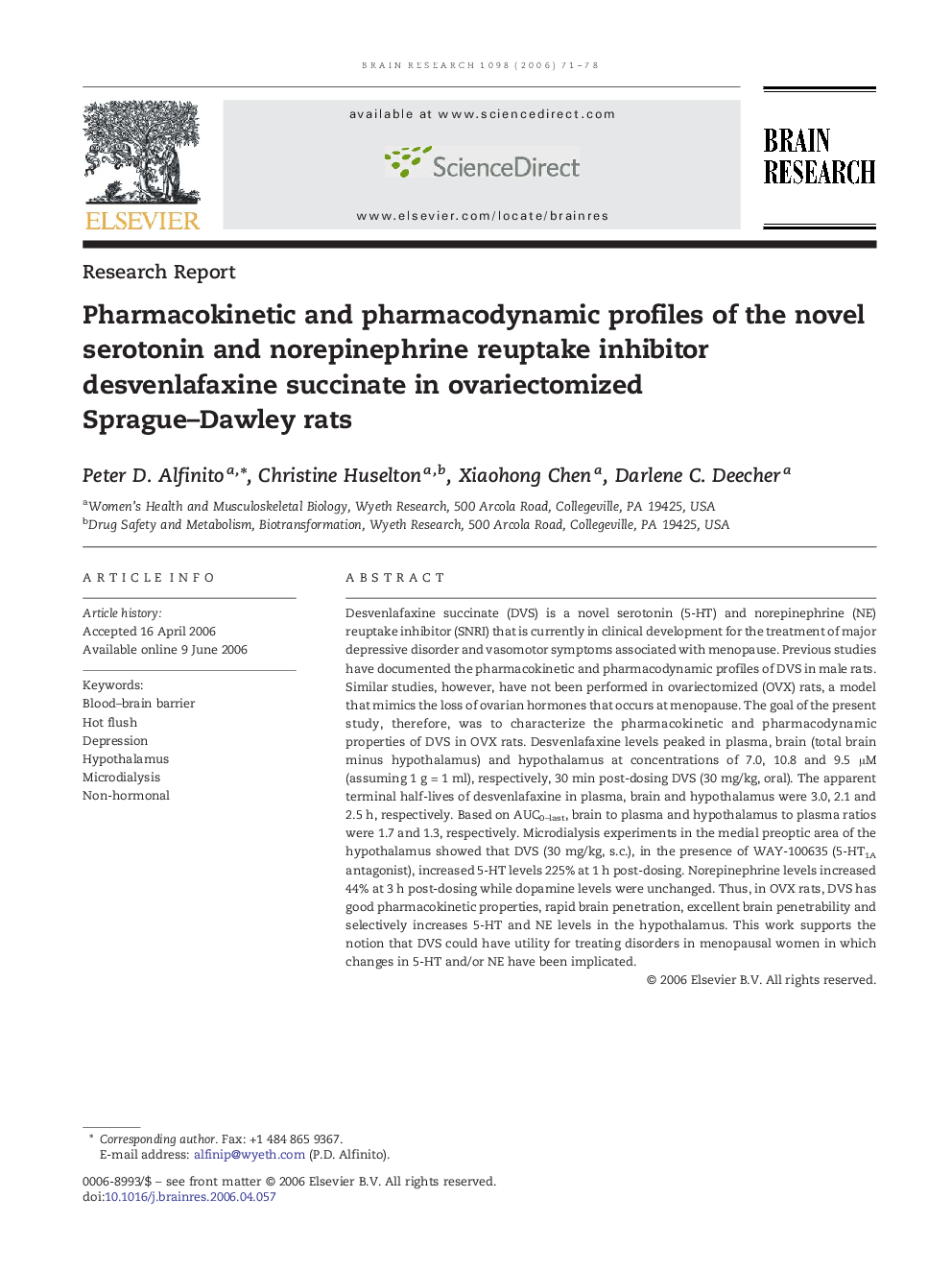| Article ID | Journal | Published Year | Pages | File Type |
|---|---|---|---|---|
| 4332654 | Brain Research | 2006 | 8 Pages |
Desvenlafaxine succinate (DVS) is a novel serotonin (5-HT) and norepinephrine (NE) reuptake inhibitor (SNRI) that is currently in clinical development for the treatment of major depressive disorder and vasomotor symptoms associated with menopause. Previous studies have documented the pharmacokinetic and pharmacodynamic profiles of DVS in male rats. Similar studies, however, have not been performed in ovariectomized (OVX) rats, a model that mimics the loss of ovarian hormones that occurs at menopause. The goal of the present study, therefore, was to characterize the pharmacokinetic and pharmacodynamic properties of DVS in OVX rats. Desvenlafaxine levels peaked in plasma, brain (total brain minus hypothalamus) and hypothalamus at concentrations of 7.0, 10.8 and 9.5 μM (assuming 1 g = 1 ml), respectively, 30 min post-dosing DVS (30 mg/kg, oral). The apparent terminal half-lives of desvenlafaxine in plasma, brain and hypothalamus were 3.0, 2.1 and 2.5 h, respectively. Based on AUC0–last, brain to plasma and hypothalamus to plasma ratios were 1.7 and 1.3, respectively. Microdialysis experiments in the medial preoptic area of the hypothalamus showed that DVS (30 mg/kg, s.c.), in the presence of WAY-100635 (5-HT1A antagonist), increased 5-HT levels 225% at 1 h post-dosing. Norepinephrine levels increased 44% at 3 h post-dosing while dopamine levels were unchanged. Thus, in OVX rats, DVS has good pharmacokinetic properties, rapid brain penetration, excellent brain penetrability and selectively increases 5-HT and NE levels in the hypothalamus. This work supports the notion that DVS could have utility for treating disorders in menopausal women in which changes in 5-HT and/or NE have been implicated.
